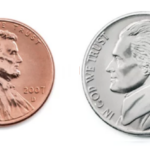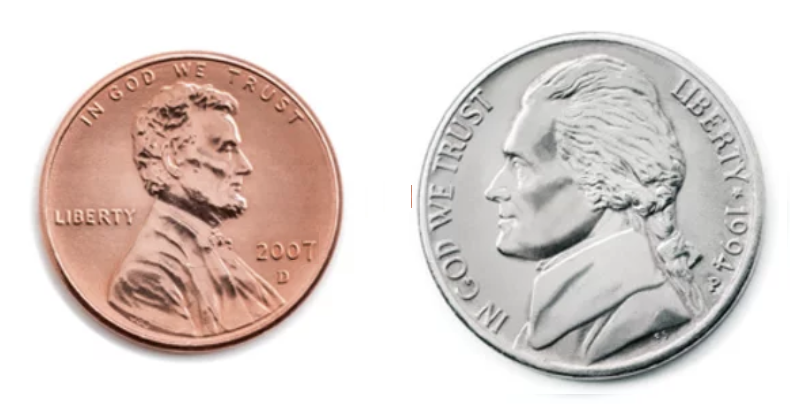Congress has swiftly passed a bill endorsing last week’s executive order by President Donald Trump directing the U.S. Treasury to increase the face value of the penny from 1 cent to 5 cents and the face value of the nickel from 5 cents to 25 cents. (TL44-2025) By increasing the purchasing power of the penny and the nickel, the Trump Administration has effectively reduced by 80% the cost of items that can be purchased with coins — such as eggs.
This directive aims to address the paradoxical problem of producing coins that exceed their monetary worth. In 2024, the U.S. Mint spent approximately 3.69 cents to produce each penny leading to an operational loss of about $85.3 million that year. Meanwhile, it spent about 12.22 cents to produce each nickel resulting in an even larger loss of $175.5 million.
By rebasing the face value of the penny and the face value of the nickel, the Trump Administration seeks to align the coin’s production cost with its monetary value.
Retailers are expected to adjust sticker prices to accommodate the new value of the penny and the nickel. Surprisingly, the price of eggs is holding steady at around $5 a dozen.
“We don’t expect this move to be inflationary, because we are not changing the value of the dollar itself and the value of $2.3 trillion in paper currency circulating in the United States,” said Michael Roth, Professor of Economics at Trudeau University.
“Since there are roughly 240 billion pennies and 70 billion nickels in circulation, this move has basically boosted the overall money supply by only $25 billion,” explained Michael Hammond, the newly-appointed Currency Czar at the Federal Reserve. “It’s equivalent to a very modest economic stimulus package that enables President Trump to increase the purchasing power of consumers in the fight against inflation without overheating the economy.”
Since the U.S. Constitution grants Congress the power to mint money and regulate its value, Congress had to respond to the executive branch’s unilateral move. The U.S. Treasury has followed suit by affirming that the rebased penny and nickel are legal tender. While the face value of the dime and the face of the quarter will remain unchanged, Congress is preparing another bill to halt the minting of dimes and quarters altogether. The U.S Mint currently spends approximately 5.76 cents to produce each dime and about 14.67 cents to produce each quarter.
The debate over the penny’s utility and value is not new. Back in 2007, economist François R. Velde had suggested that the government make the penny worth five cents. Altering the face value of U.S. currency is unprecedented and may introduce some unexpected outcomes — both positive and negative.
“Now I can buy a bike,” said 12-year old Anna Torres after learning that her collection of 10,000 pennies was now worth $500.
“We raise over $1 million a year by collecting pennies,” said Vivian Miller, founder of Pennies for Vets, an Alabama-based nonprofit. “This unexpected windfall is going to help a lot of veterans.”










